Alfred Herbert Taylor — The Best of the KNOCKOUT Artists
Compiled by Mark Hodder from Material Provided by the Taylor Family
Alfred Herbert Taylor was born on 31st December, 1889 (this is the date on his death certificate. Online sources quote his birth as being listed during the first months of 1890) and grew up in Timperley near Altrincham, Cheshire. His father was a railway clerk and, at some stage, the innkeeper at a Nag’s Head public house.

Alfred served in the First World War as a stretcher-bearer (Royal Medical Corps), and took part in the North Russian campaign (Archangel—the Allied intervention in the Russian Civil War after the October Revolution). The diary he kept at that time, and sketches of Russia, France and Egypt, are in the archive at the Imperial War Museum.
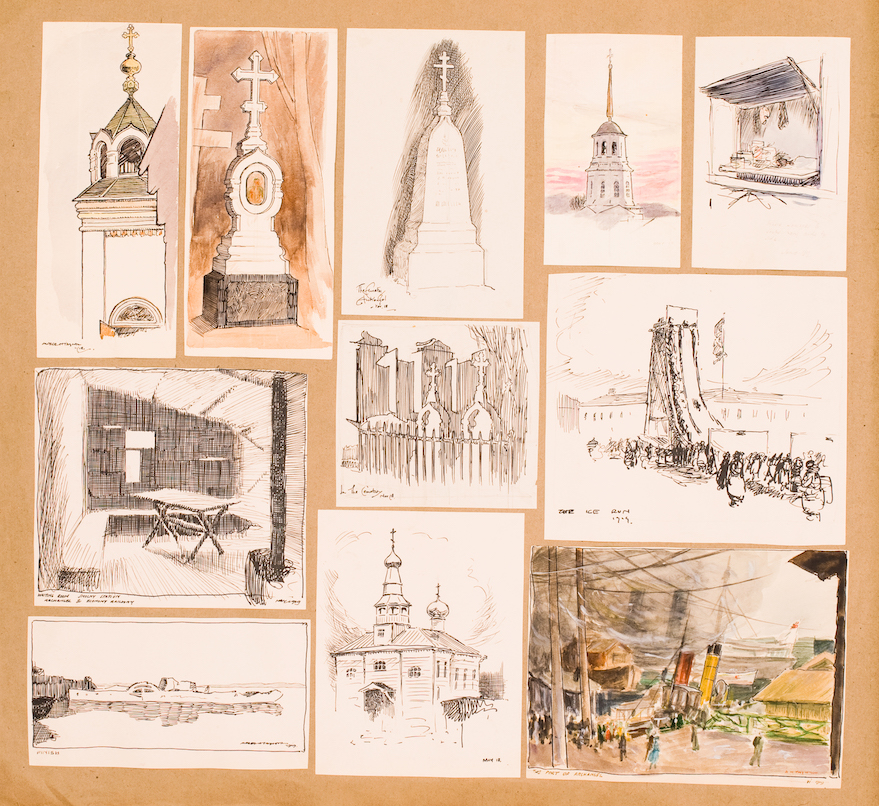

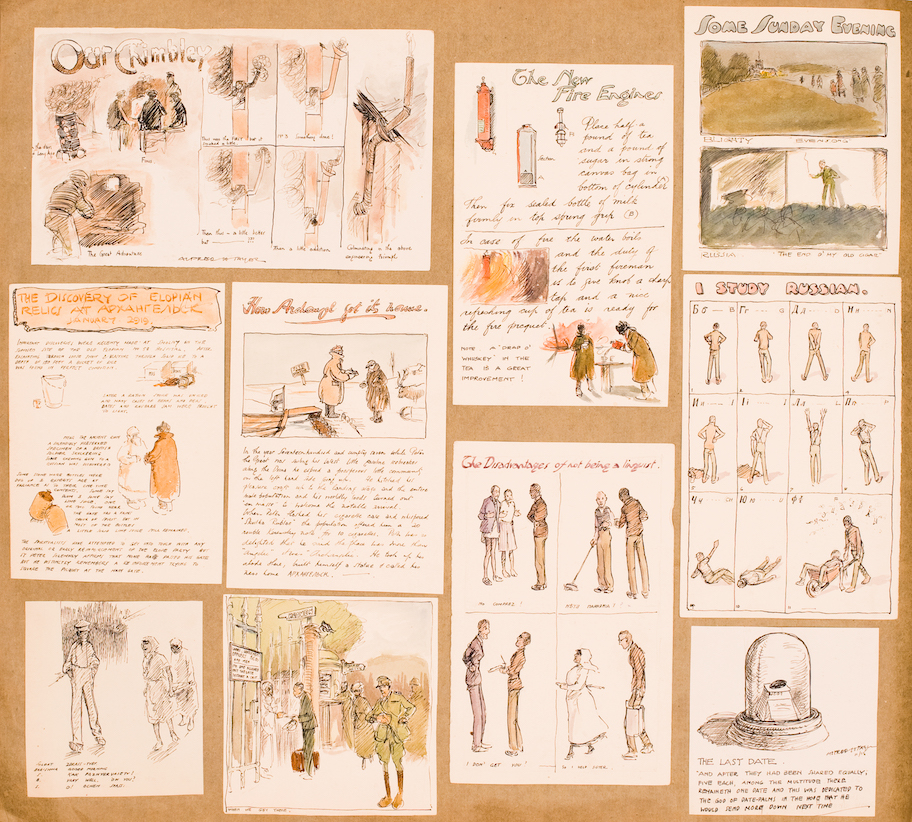
He went to art school in Manchester and, after demobbing, moved south, where he attended Kingston Upon Thames Art School. There, he met his future wife, Agnes, also an artist. She had befriended Quentin Crisp when he was an artist’s model at Wimbledon Arts School, and later, she had a painting hung in the Royal Academy.
Upon finishing his education, Alfred got work as as a pattern designer for a textile company, which exported to India.
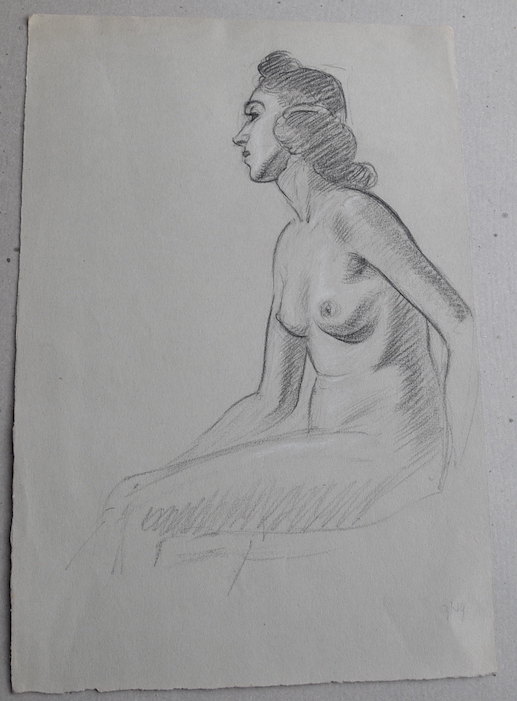
The Taylors moved to a room in Streatham, but when their daughter was born, in 1928, they relocated to Mitcham, where they added two sons to the expanding family. Finally, in 1959, they moved down to sleepy Walburton in Sussex, where they lived in a bungalow a couple of miles from Barnham Railway Station. Alfred used the garden shed as his studio and, once a week, would bicycle to the station and catch the train to London, where he would deliver his work to Amalgamated Press.
Apart from—and before—his Sexton Blake work, he provided illustrations and cartoons for GAIETY, THE HUMOURIST, PUNCH, THE HAPPY MAG, THE PASSING SHOW, and many others. He also illustrated an adventure text series—“Ace of Tecs”—featuring Barrington Clive as the detective (THE SURPRISE COMIC, 1932, at least between April 9th and September 24th according to his own notes in a scrapbook of these illustrations). However, the main protagonist in his pictures was more often the hero's female associate-cum-ragdoll, Kiddie, who got into all sorts of scrapes and acrobatics.

When the Second World War broke out, he was around 49 years old, and served in the ARP (conscription included men up to 41) and as a signwriter. It was then, at the end of 1939, that he became the artist for Sexton Blake in KNOCKOUT COMIC, taking over from Jos Walker, who had illustrated the debut, 41-part serial. Alfred illustrated all the subsequent Blake KNOCKOUT adventures until January 1949 when, after the final instalment of SEXTON BLAKE VERSUS SOLO, he and the writer Percy Clarke were replaced (Alfred would have been 54 or 55 by then). In the next issue, the artwork was provided by Blake's best-known illustrator, Eric Parker (from the UNION JACK and SEXTON BLAKE LIBRARY), who worked on a single KNOCKOUT serial in a style not too dissimilar to Alfred's. After that, a succession of inferior artists took over and the comic began its lengthy decline. Alfred continued to letter for the comic, but according to his daughter was none too happy in his new role. He also worked balancing the pages with black ink. Later, he also did lettering duties for VALIANT and BUNTY.

The Clarke/Taylor team was responsible for the KNOCKOUT's "Golden Age" of Blake strips. The stories, most of which involve the inventor Hoo Sung and his amazing machines, the Rolling Sphere and the Flying Disk, are wild and atmospheric, filled with action that is perfectly evoked by Alfred's artwork.
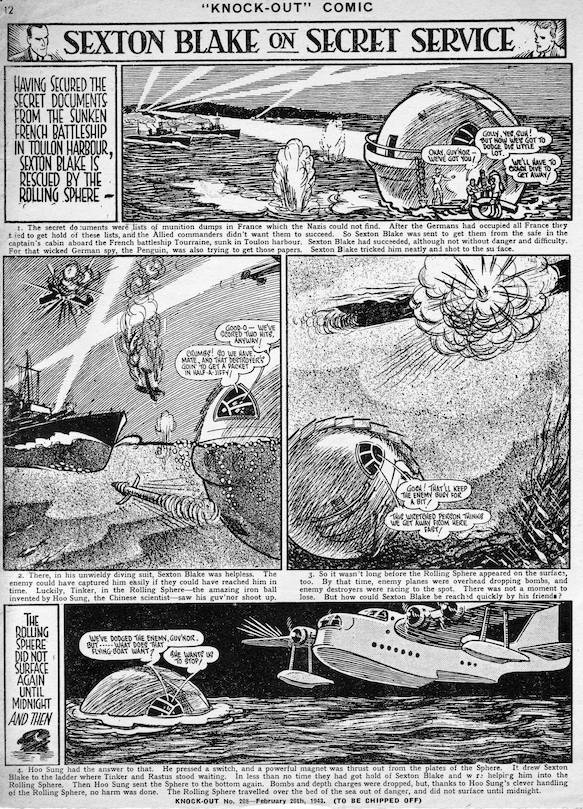
During the period when his time at the comic was coming to an end, it is thought that Alfred also did some lettering for Pathé news.
He used to keep lots scrap books of pictures he found interesting, to help him with poses in the cartoons. Not many of his preparatory sketches remain, however, as the first proofs were reused, with the final illustrations being drawn on the other side of the paper, which was in short supply due to the war. The family holds very few original illustrations, and none of Sexton Blake. One non-Blake original owned by his granddaughter is on drawing board and probably around twice the size it would have been reproduced. Blake proofs were on either a glossy white paper or, much more commonly, on the one side of newsprint, the same quality as the comic.
Alfred suffered from chilblains in his hands when it was cold, which made it difficult to work. He took medicine for this, and, during rationing, cut the ends off socks and used them as mittens.
As a self-employed gentleman, he had no pension, so had to carry on working. He would travel up to London once a week to pick up and drop off work at Amalgamated Press.
Apparently, he had a very good ear for music.
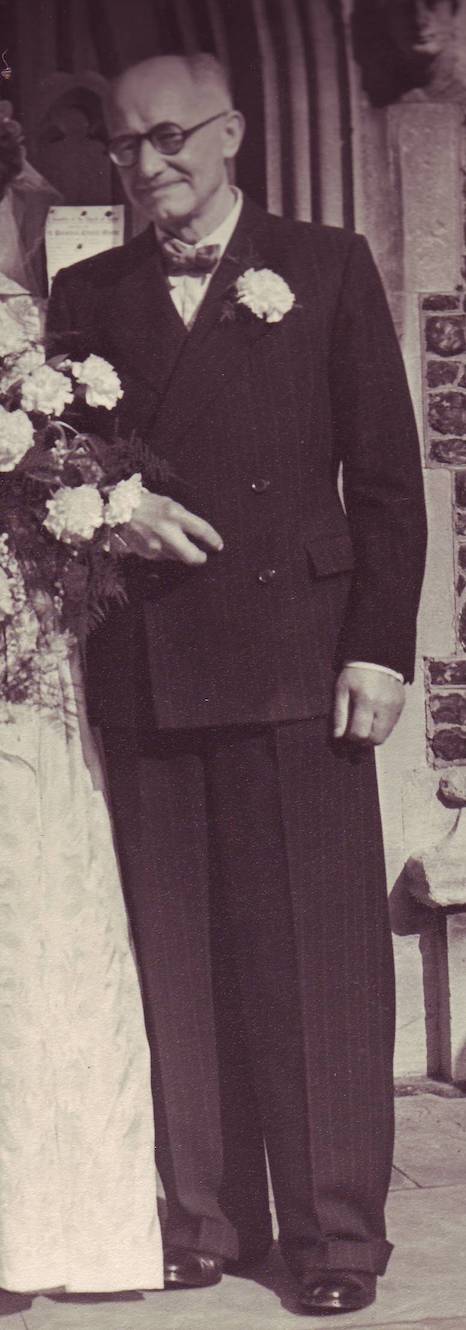
Among his many other works, Alfred Taylor drew "The Secret of the Sphinx" for BIG CHIEF COMIC (194?), "Down Paradise Alley" for SMASHER COMIC (1947), "White Goddess of the Cloud Lands" for BIG GAME COMIC (1948), and "Tales of the Odyssey" for BOOMERANG COMIC (1948). From the 1950s, he specialised in lettering.

